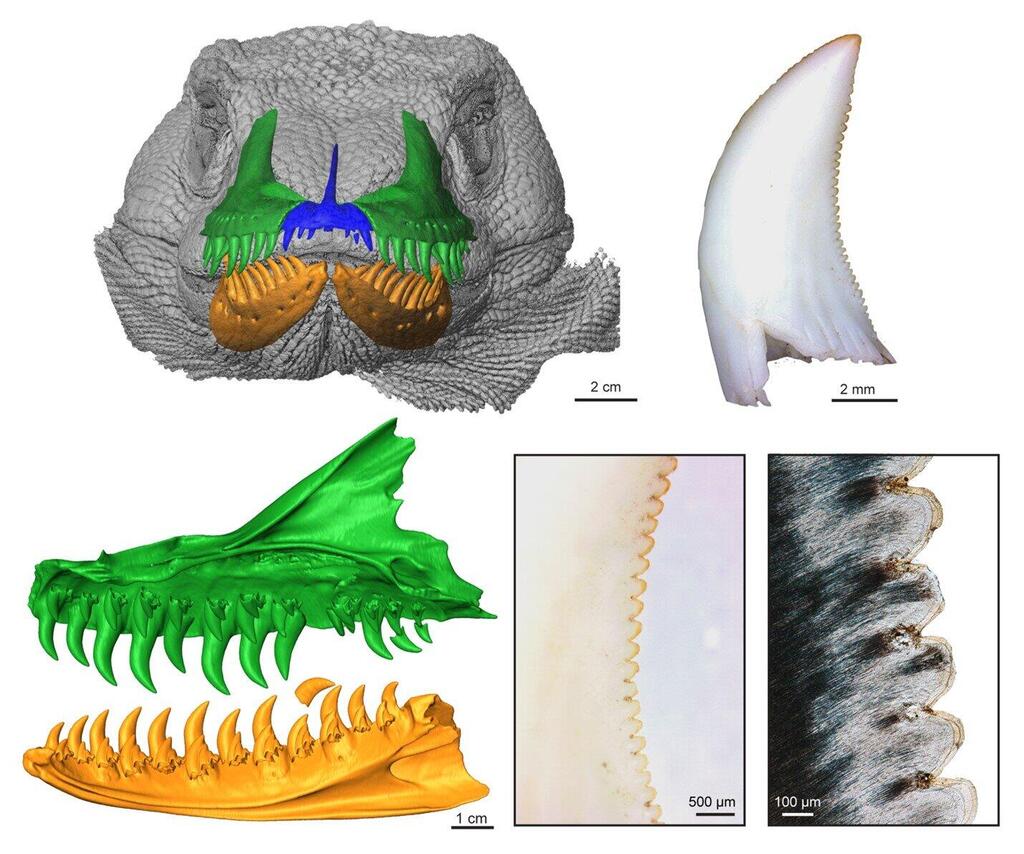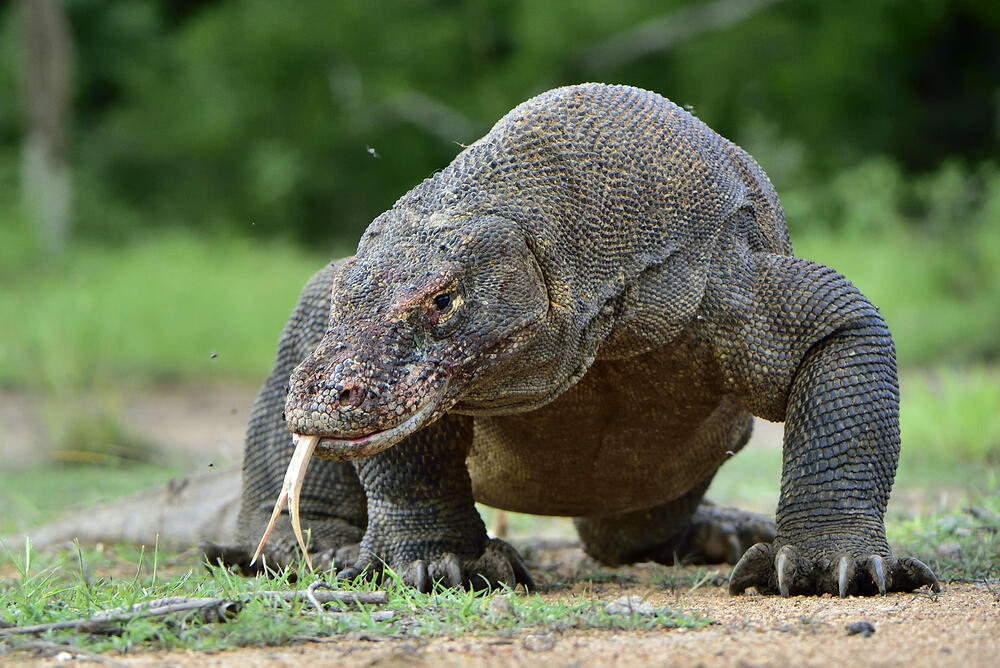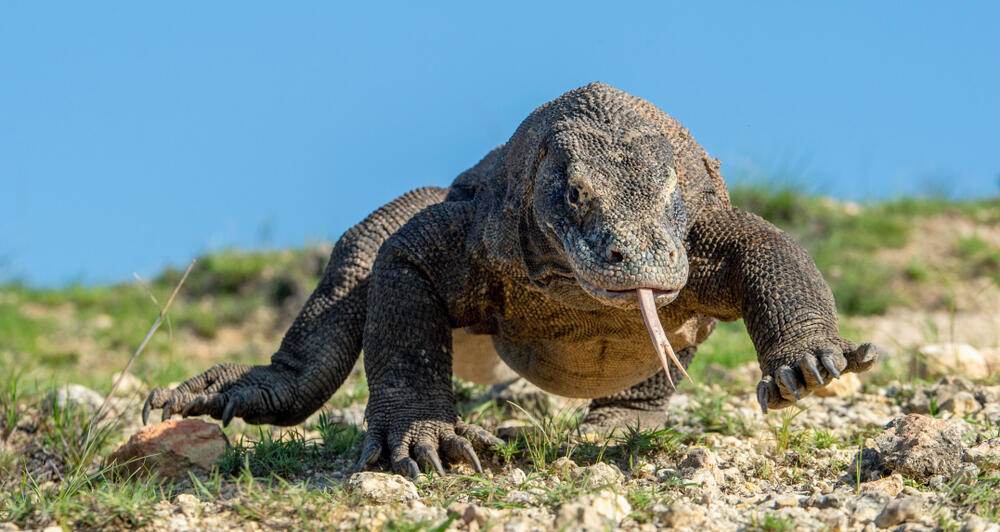Getting your Trinity Audio player ready...
Kilat, the magnificent Komodo dragon residing at the Toronto Metro Zoo, captivates visitors with his imposing size and intense gaze, reminiscent of a formidable theropod dinosaur. As one explores its enclosure, it's not uncommon to stumble upon glistening shed teeth, reminiscent of the remnants left behind by Mesozoic theropods.
Read more:
This intriguing discovery has prompted researchers to delve into the study of the teeth and feeding habits of this apex predator. The Toronto Zoo team, in collaboration with the Royal Ontario Museum, has collected numerous shed teeth and gained access to skulls in the museum's skeletal collection.
While previous studies have focused on the unique feeding behavior of Komodo dragons, little attention has been given to the correlation between their distinctive dental morphology, development and replacement. To address this gap, the team employed a combination of histological analysis and computed tomography (CT) to examine the dentition and jaws of both adult and juvenile Komodo dragons.
Their findings revealed surprising similarities between the teeth of adult Komodos and those of theropod dinosaurs. The adult Komodo teeth exhibit strong recurved shapes with serrated cutting edges, reinforced by dentine cores.
This groundbreaking research sheds new light on the dental adaptations of Komodo dragons, highlighting their evolutionary connection to ancient theropods. By unraveling the mysteries of their teeth, scientists gain valuable insights into the feeding strategies and ecological roles of these remarkable creatures.
Ph.D. student Tea Maho, lead author of a paper on this research: "We were very excited by this discovery because it makes the Komodo an ideal living model organism for studies of the life history and feeding strategies of the extinct theropod dinosaurs."
3 View gallery


Serrated teeth help the Komodo grab hold of its prey's flesh
(Photo: Tea Maho, University of Toronto Mississauga)
The teeth of the Komodo dragon, much like those of its reptilian relatives, including the long-extinct theropod dinosaurs, exhibit a fascinating ability for continuous replacement. Through the application of histological analysis, a common method for examining the microscopic structure of teeth, and X-ray computed tomography (CT) imaging, researchers have uncovered intriguing insights into the dental dynamics of these formidable creatures.
Contrary to most known reptiles, which typically possess one or two replacement teeth per jaw, including the majority of theropod dinosaurs, the Komodo dragon showcases a remarkable adaptation. Astonishingly, the Komodo dragon initiates the production of new teeth in each tooth position every 40 days. This accelerated rate of tooth regeneration accounts for the abundant presence of shed teeth within the Komodo dragon enclosure, as the new teeth rapidly replace the worn functional ones. In comparison, other reptiles, including most theropod dinosaurs, typically take three months or even up to a year to generate a replacement tooth.
Study co-author, Dr. Robert Reisz, added: "Having this many teeth within the jaw at a given time is a unique feature among predatory reptiles, and only seen In the Komodo."
Throughout their growth into adulthood, Komodo dragons undergo a remarkable transformation in their dental structure, which coincides with their transition from arboreal creatures to apex predators capable of dominating their environment.
One intriguing observation made by researchers is the distinct absence or diminutive size of the front teeth in adult Komodo dragons. This unique dental morphology aligns with their distinctive tongue-flicking behavior. With a slender, forked tongue reminiscent of snakes, Komodo dragons utilize this specialized organ to hunt for prey, all without having to even open their mouths! This adaptation allows them to stealthily forage for sustenance, enhancing their predatory capabilities.
This intriguing correlation between dental morphology and hunting technique further underscores the remarkable adaptability and evolutionary prowess of these awe-inspiring creatures. The absence or reduced size of front teeth in adult Komodo dragons serves as a testament to their ability to thrive and conquer their domain using unconventional strategies.



